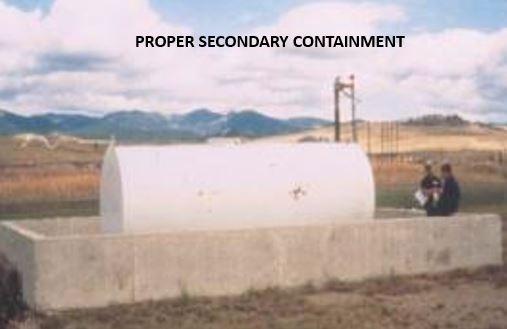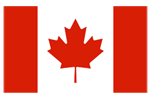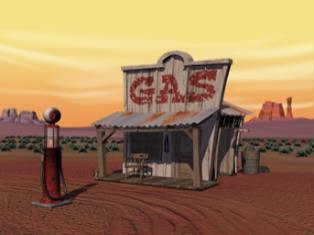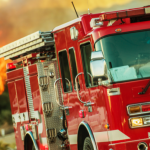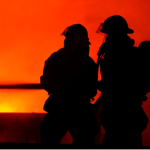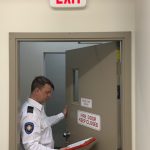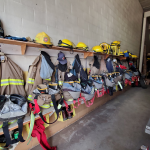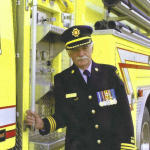Fuel Dispensing Stations – Checklist
Definition:
Any premise where flammable or combustible liquids are dispensed from fixed equipment into the fuel tanks of motor vehicles, watercraft or floatplanes.
Above Ground Tanks
- The BC Fire Code limits the maximum size of a tank to 50,000 L and a total capacity 150,000 L
- Physical protection from collision – concrete island 100 mm high or posts and guardrails etc.
- Prevention of unauthorized access
- Measures must be taken to contain spills
- Installed on the ground or foundation of concrete masonry or steel – if subject to flooding be strapped
Location
Outside buildings
- 3 m from property line – 3 m from propane dispenser – 1.5 m from gas dispenser
- 6 m from ignition source – 3m from building openings – 6 m from propane tank
Underground Tanks
- Venting 3.5 m above ground – 1.5 m from bldg. openings – 7.5 m from dispenser
- Tanks that are taken out of service must comply with Part 4 of the BC Fire Code
Emergency Shut-off Device
Must be clearly identified, readily accessible and shielded from any fire
Portable Extinguishers –
Areas that handle flammable or combustible liquids are classified as extra hazard locations and require a minimum of two 10BC rated portable fire extinguishers to be located within a travel distance of 9 metres.
Delivery Hose
- Hose length restricted to 4.5 m
- Nozzles must be the automatic closing type.
No Smoking Signs required 200mm 25 mm high letters
Fire Safety Plan
The BC Fire Code requires a Fire Safety Plan which includes instructions to staff on how to deal with emergencies and measures to deal with spills.
Supervision
- At least one attendant must be on site while open for business
- The duties of attendant must be understood by all employees and be posted
Spill Protection
- The site must be graded to control spills
- Absorbent material must be readily available
Inventory Control for Underground Storage Tanks
Leak Detection Tools
- Paste for finding water – monthly
- Gauge stick – 1/8 inch increments not cut off or worn off at the “0” end
- Forms to record Daily & Monthly leak detection
Measurements
- Measure the tank every day that fuel is added or removed using a gauge stick or a mechanical or electronic tank level monitor.
- Step 1—Measure the Tank’s Contents
- Step 2—Record the Amount Pumped
- Step 3—Record Fuel Deliveries
- Step 4—Calculate Daily Changes In Inventory
- Step 5—Calculate Monthly Changes In Inventory
- Measure each tank every operating day
- Use gauge sticks that are marked to the 1/8 inch not cut off or worn off at the “0” end
- Measure just before each delivery
- Read and record totalizer meters carefully
- Check for water at least once a month using water-finding paste
